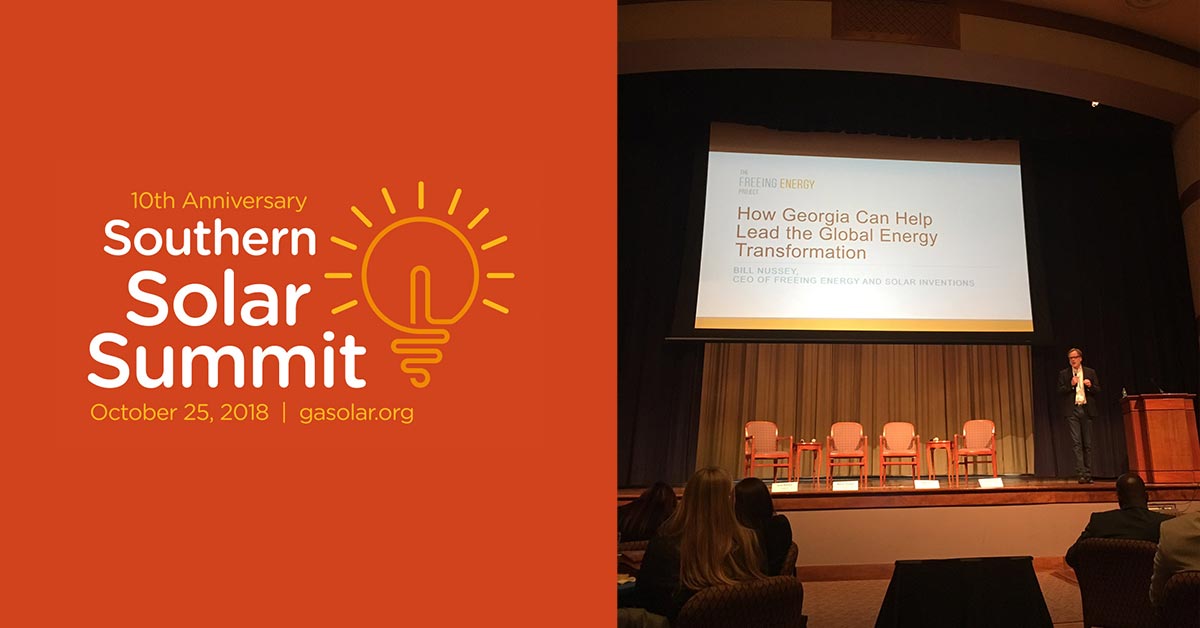
I recently had the honor to keynote the 10th annual Southeastern Solar Summit. My presentation focused on two points:
- Solar and battery will become the largest source of electricity sooner than people think
- Georgia is in a unique position to help lead the clean energy transformation
How can solar and battery possibly become the least expensive source of electricity?
My recent post, The inevitability of a solar-powered future, explained how the costs of solar are dropping so rapidly that it is already one of the least expensive sources of electricity. Solar is on it’s way to becoming the uncontested price leader in just a few short years. But it has an Achilles heel. Solar power doesn’t work at night and its output is greatly diminished during bad weather. The industry refers to this problem as “intermittency.” While this is often lumped into a single bucket, I believe intermittency can be divided into three distinct challenges: daily, weekly, and seasonally – with each being tougher than the last to address.
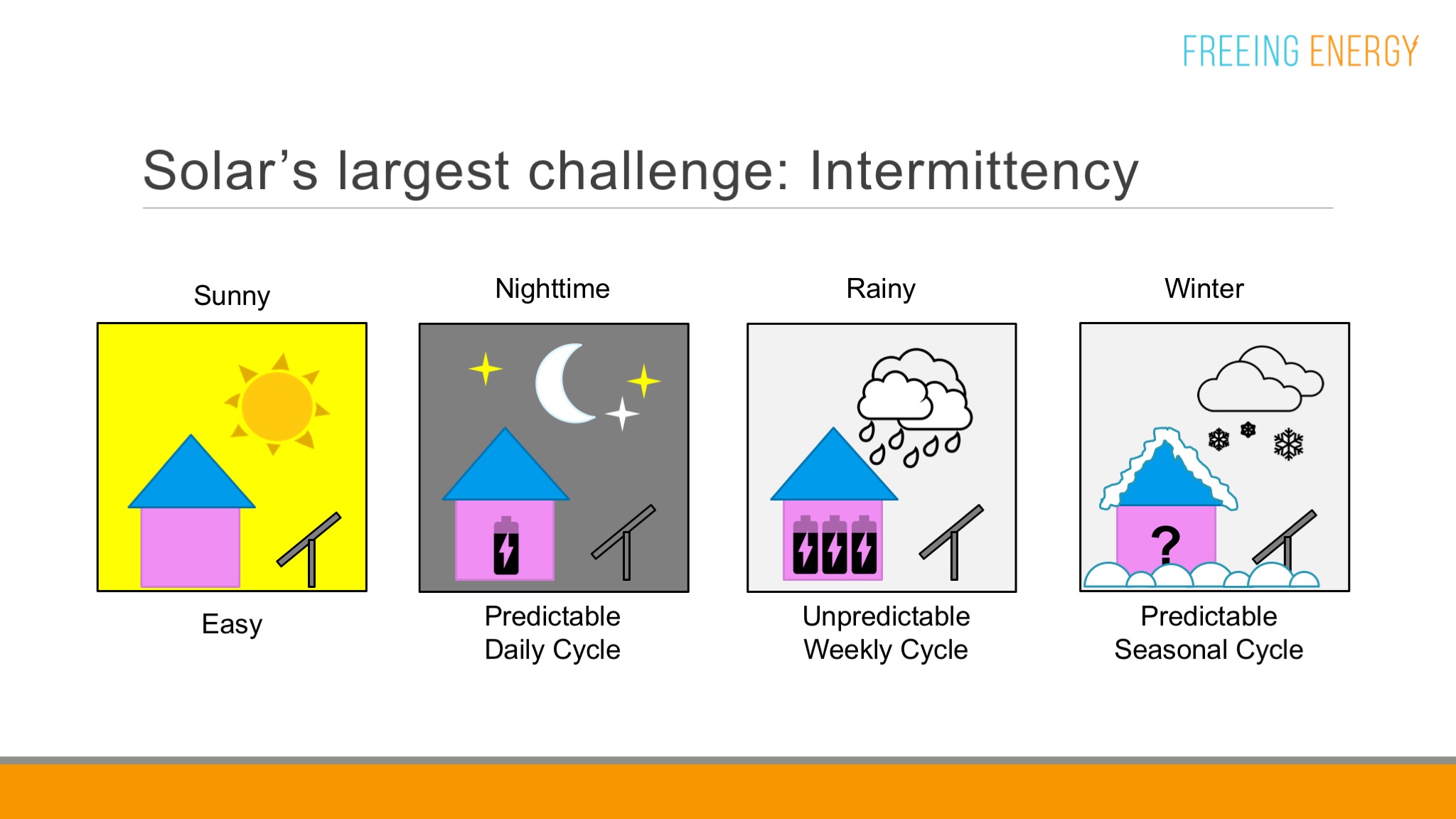
Fortunately, batteries are already able to address the daily intermittency cycle. As prices drop, batteries will be able to address the weekly cycle as well. The final cycle, seasonal, remains tough to solve. In the near term, natural gas turbines are the best solution but a lot of innovation is being focused on solving seasonal storage with fuel-free and emissions-free technology. Every year, the price of battery storage drops lower and lower, edging the world towards a purely clean energy future.
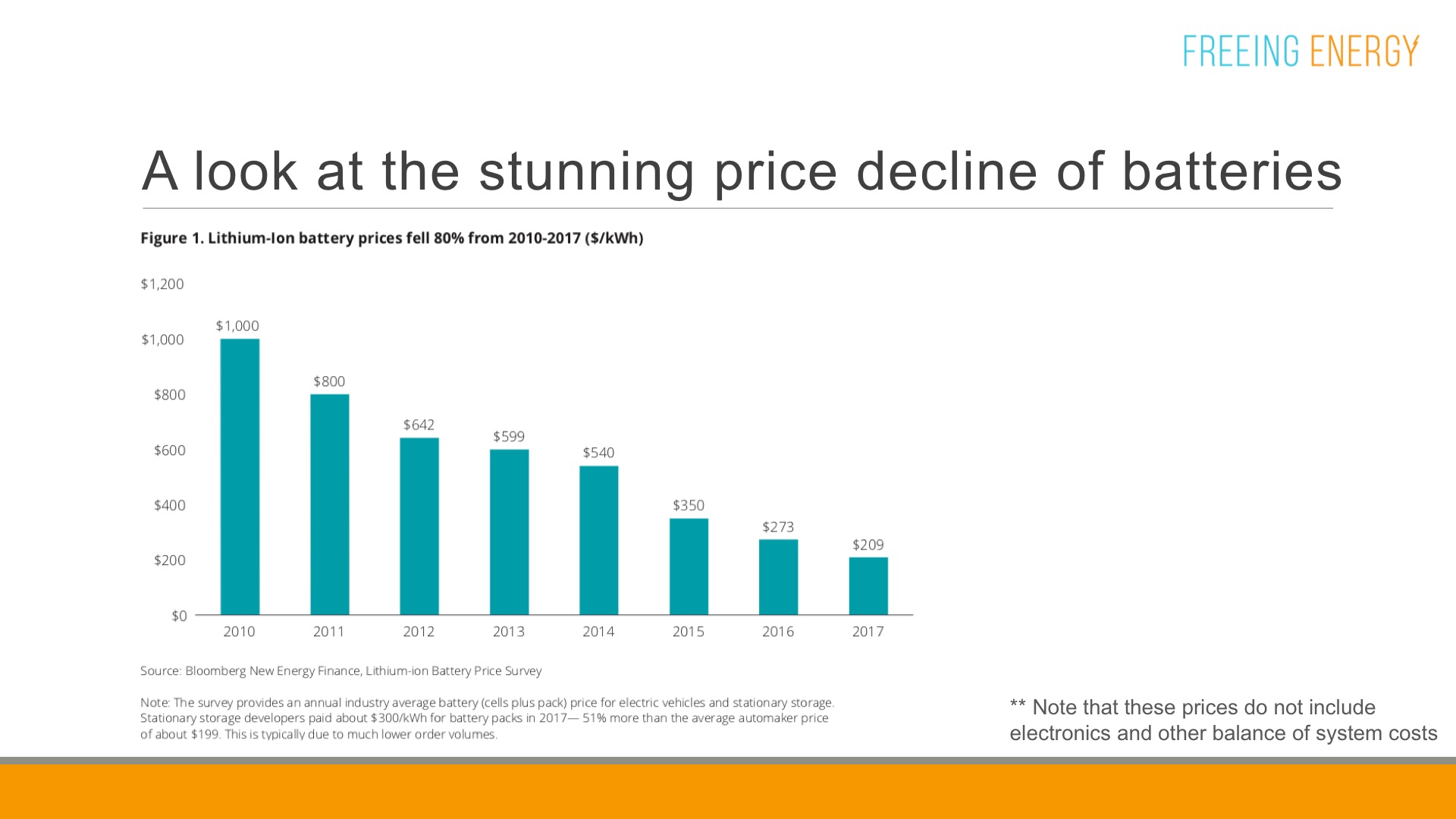
Batteries are quickly approaching a point where the combined cost of solar and batteries is actually less than what the residential and even commercial prices of grid electricity.
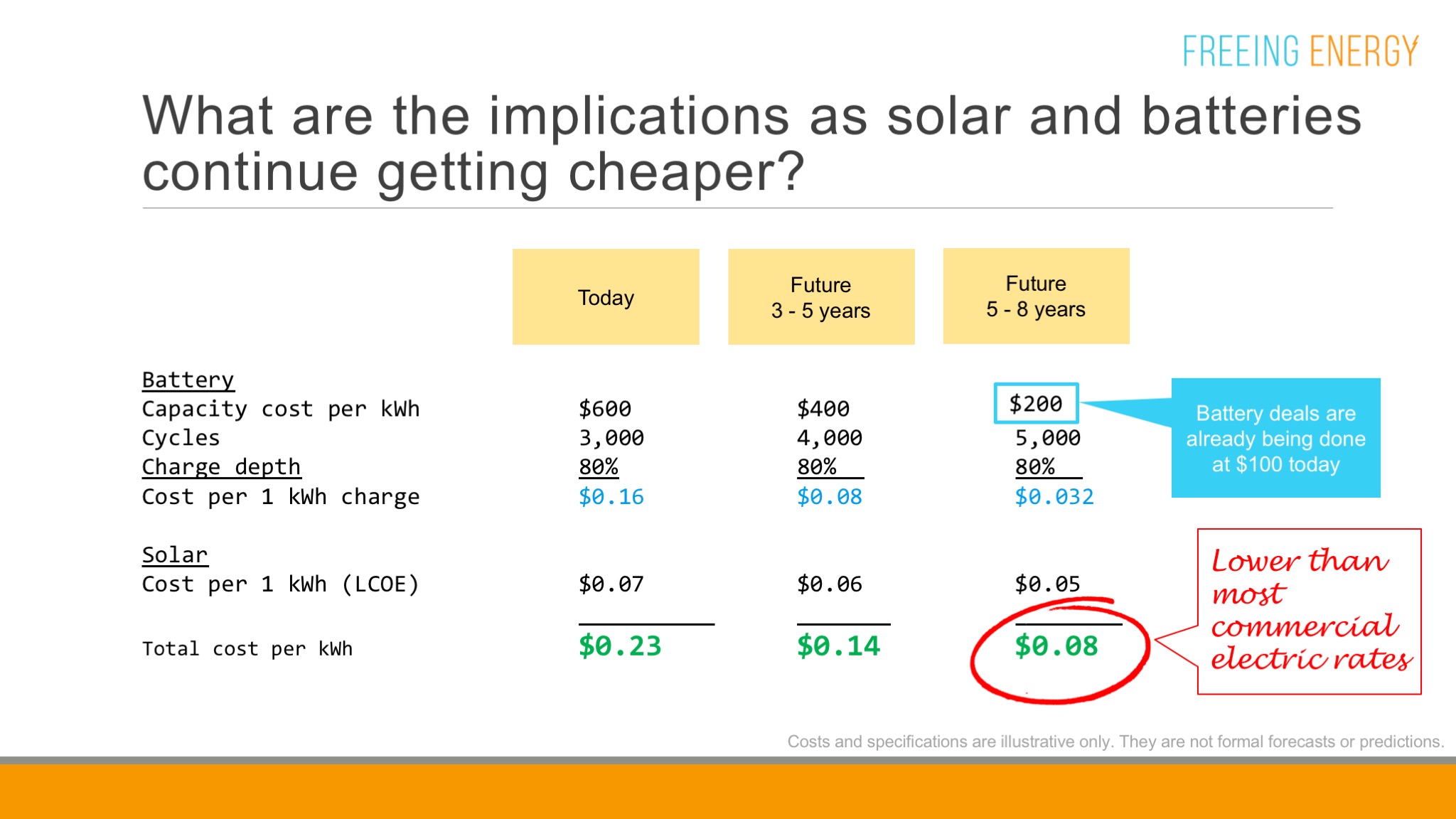
I asked the audience to help me shoot holes in my battery math. To my surprise, several people pointed out where my math was too conservative. It turns out that battery life cycles are already higher than my numbers.
GET MONTHLY NEWS & ANALYSIS
Unsubscribe anytime. We will never sell your email or spam you.
How well is Georgia positioned to be a global clean energy transformation?
Georgia may well be the most interesting energy state in the country. While it isn’t as forward thinking on clean energy as states like California, Hawaii or New York, the peach state isn’t afraid to defy conventional wisdom.
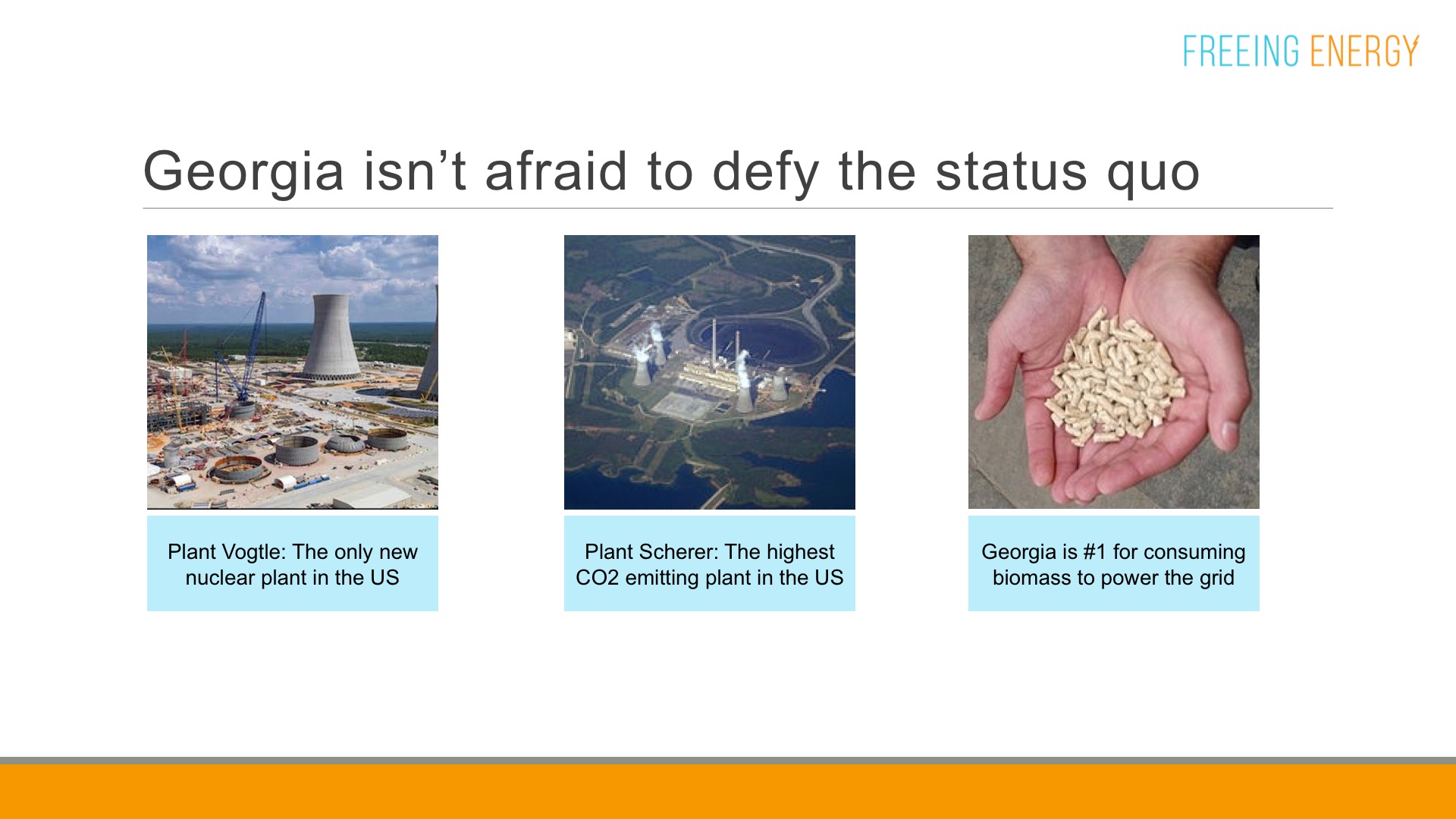
This makes it even more notable and surprising that Georgia has a history of being a national and global leader in ways likely to appeal to clean energy enthusiasts:
- In 1955, Bell Labs placed the first commercial solar panel in the world in Americus, Georgia
- In 1979, Georgia and the US government build the world’s first large-scale solar farm in Coweta County
- In 1996, Georgia earned the distinction of building the then largest rooftop solar array as part of the Olympic aquatic center
- In 2014, thanks in part to some generous tax incentives, Georgia had the highest concentration of electric vehicles of any state
- In 2017, Southwest Georgia was home to the first US pilot of a solar-powered roadway
- 2019 will see the deployment of the largest solar panel manufacturing plant in the country – Hanwha Q-cell’s plant in Whitfield County, Georgia
What can Georgia do to emerge as a global clean energy leader?
Georgia has made tremendous strides over the last few years. It has enacted legislation for third-party solar generation ownership. It has set and achieved aggressive solar targets for its utilities resulting in the state’s rank as 10th in solar installations. Going forward, the state needs to keep up this momentum and continue using policy to increase solar, battery and possibly wind onto the state’s grids.
The biggest opportunity for Georgia and any other region is not about top-down, grid-wide policy. It’s about opening the grid for entrepreneur-run, small private grid projects – what I call “transactive mini-grid sandboxes.”
Today, the policy and technology evolution of the grid is throttled by long cycle, statewide regulations and cautious billion-dollar utility giants. Without a new approach, grid innovation will continue to proceed at a glacial pace.
I pointed out that computer mainframe companies didn’t invent the internet and the old monopoly controlled telecom industry didn’t spark the mobile phone revolution.
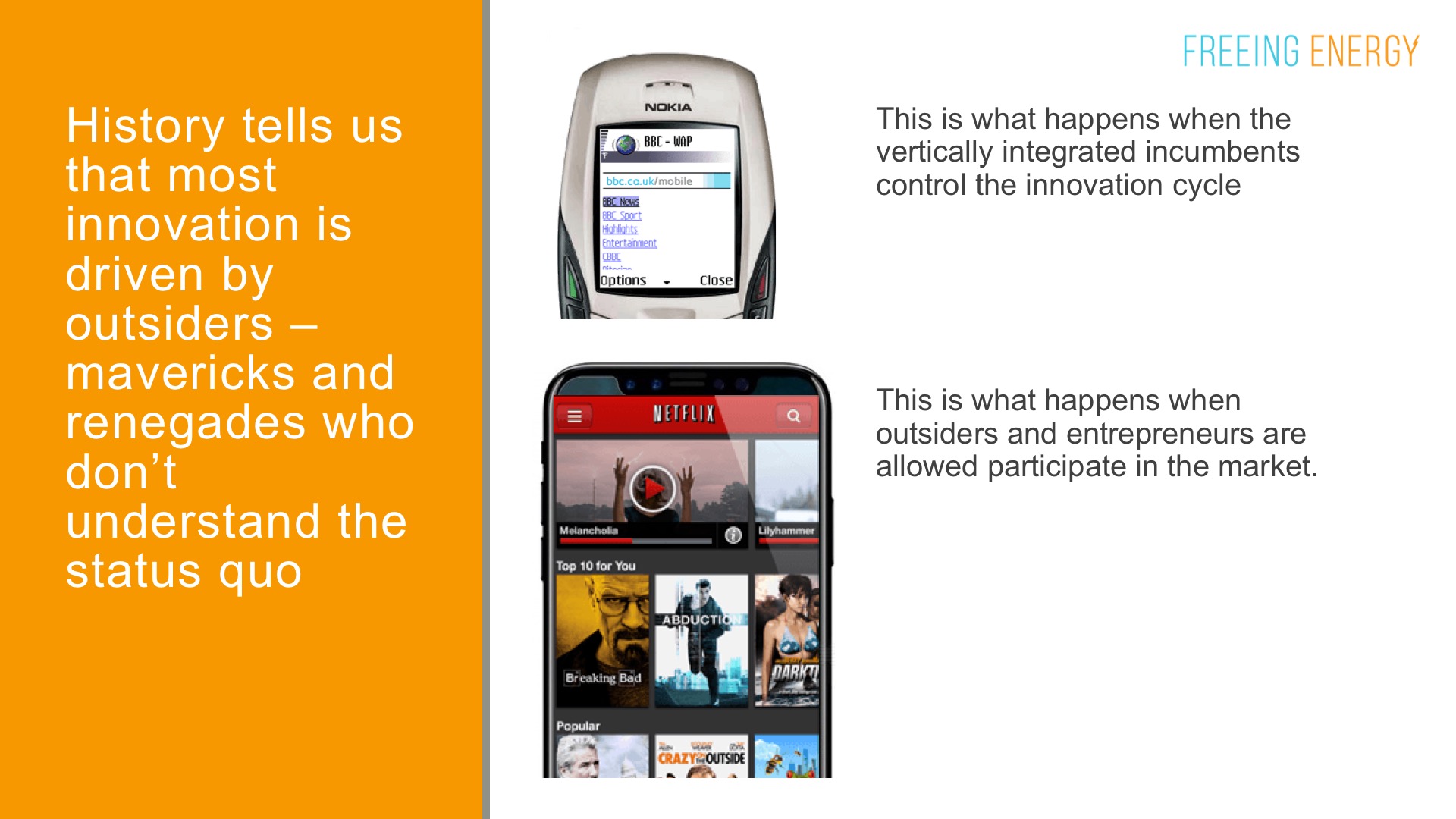
I wrapped up with a quote by industry visionary and retired CEO of Duke Energy, Jim Rogers.
It’s time for the power industry to become a technology business again.
— Jim Rogers
[slideshare id=120980515&doc=gasolarsummitkeynotev1-181028104933]

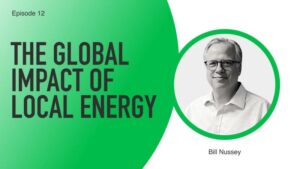
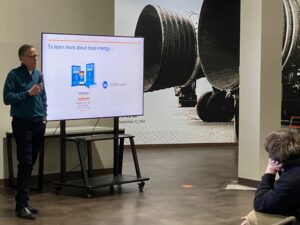

2 Responses
Please see comment by the inventor of the solid state transformer, Newt Ball here: https://1drv.ms/w/s!ApYl96h2rQbBgbd-J4iWNv9X3Xn3tg
Thanks, Newt. That’s a great overview of a potentially massive disruptor in the energy space.